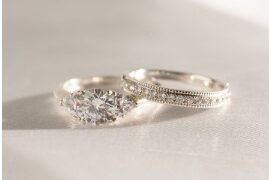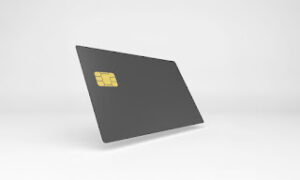Welcome to the dazzling world of jewelry, where every shimmering piece tells a tale as old as time. From ancient civilizations to modern trends, the language of jewelry has always been an enchanting way for individuals to express their unique style and personality. In this captivating blog post, we will embark on a journey through history, unraveling the hidden meanings behind these sparkling treasures. Get ready to discover how jewelry has evolved over the centuries and decipher its intricate codes that speak volumes about culture, tradition, love, power, and so much more.
Introduction: The Meaning of Jewelry
Jewelry has been a part of human culture since the dawn of civilization. It is an expression of personal style and can convey messages of status, power, and wealth. Jewelry can also be a symbol of love, friendship, or religious faith.
Throughout history, jewelry has been used to adorn the bodies of kings and queens, celebrities, and socialites. It has been worn as a mark of status and as a sign of wealth. In some cultures, jewelry is thought to have magical powers.
In recent years, there has been a resurgence in the popularity of vintage and antique jewelry. This trend is being driven by a new generation of fashion-savvy consumers who appreciate the history and craftsmanship of these pieces.
Whether you’re looking for a statement piece or something more understated, there’s no doubt that jewelry can add a touch of elegance and sophistication to any outfit. So next time you reach for that necklace or pair of earrings, take a moment to think about the meaning behind them—you might be surprised at what you find!
Ancient Jewelry: Symbolism and Significance
Ancient cultures around the world used jewelry as a form of personal adornment and as a means of communicating status, power, and religious beliefs. Jewelry was often made from materials that were rare or precious, such as gold, silver, and gems, which added to its value and meaning.
For example, in ancient Egypt, jewelry was used to signify social status and power. The pharaohs wore elaborate jeweled headdresses, necklaces, bracelets, and rings to show their wealth and authority. Commoners wore much simpler jewelry made from less valuable materials.
Jewelry was also used as a form of currency. In some cultures, gold or silver jewelry was accepted as payment for goods and services. In others, certain types of jewelry were given as gifts to seal important deals or contracts.
Jewelry was also believed to have magical powers in many cultures. It was thought to protect the wearer from harm or evil spirits. For example, amulets in the shape of animals were worn in ancient Egypt to ward off evil forces. Rings were worn as talismans in medieval Europe to protect against witches and goblins.
The symbolism and significance of jewelry have changed over time, but it remains an important part of human culture. Today, people continue to wear jewelry for personal adornment, self-expression, and as a way to communicate their status and beliefs.
Middle-Early Jewelry: Power, Status, and Wealth
The Middle Ages were a time of great power, status, and wealth for those who could afford it. And what better way to show off your riches than with lavish jewelry? Every piece of jewelry told a story—whether it was a gift from a loved one or a sign of your social standing.
One of the most popular pieces of jewelry during the Middle Ages was the brooch. These ornate pins were used to fasten cloaks and dresses and were often adorned with precious stones or intricate designs. Brooches were also given as gifts, and their meaning could be interpreted in many ways. For example, a brooch in the shape of a dragon might represent courage and strength, while one in the shape of a flower might symbolize love and beauty.
Rings were another popular form of jewelry during the Middle Ages. They could be simple bands of metal or adorned with jewels and other decorations. Rings were often given as gifts, and their meaning could vary depending on the design. For example, a ring with a snake would represent wisdom, while one with a lion might symbolize courage.
Necklaces, earrings, bracelets, and other items were also popular during the Middle Ages. These pieces were often made from precious metals like gold and silver and adorned with gems and other decorations. Like rings and brooches, they could be given as gifts or worn as a sign of social status.
Modern Jewelry: Trends and Expressions
The word “jewelry” is derived from the Old French “jouel”, which in turn comes from the Latin “jocale”, meaning plaything. Jewelry has been used as a form of personal adornment since ancient times, with different pieces serving different purposes. For example, in some cultures, necklaces were worn as a sign of status, while in others they were believed to possess magical or religious properties.
Today, jewelry is still worn for both practical and decorative reasons. However, the trends and expressions associated with modern jewelry are quite different from those of ancient times. In this section, we’ll take a closer look at some of the most popular modern jewelry trends and expressions.
One of the most popular trends in modern jewelry is the use of unique materials. This includes everything from recycled plastic to wood and even concrete. These materials are often used to create statement pieces that are both eye-catching and eco-friendly.
Another popular trend is minimalism. This involves opting for more simplistic designs that are often easier to wear daily. This style of jewelry is perfect for those who want to make a subtle statement without feeling overloaded by their accessories.
Another popular expression in modern jewelry is self-expression. This can be achieved by choosing pieces that reflect your style or story. Whether you opt for something sentimental or simply choose something that makes you feel good when you wear it, self-expression through jewelry is
Different Types of Jewelry Materials
Different types of jewelry materials have been used throughout history, with the most popular ones being gold, silver, and platinum. In more recent years, however, other materials such as titanium, stainless steel, and even plastic have become popular choices for jewelry.
Gold is by far the most popular choice for jewelry making, as it is a very malleable metal that can be easily shaped into different designs. It is also a very strong metal that does not tarnish easily. Silver is another popular choice for jewelry making, as it is also a very malleable metal that can be easily shaped into different designs. However, silver is not as strong as gold and can tarnish over time if not properly cared for. Platinum is another popular choice for jewelry-making due to its durability and strength. However, it is one of the more expensive metals and can be difficult to work with.
Titanium has become a popular choice for jewelry in recent years due to its strength and lightweight. It is also hypoallergenic, making it a good choice for those with sensitive skin. Stainless steel has also become a popular choice for jewelry due to its durability and low maintenance costs. It is also available in a variety of colors. Plastic has also become a popular material for costume jewelry due to its low cost and easy availability.
Final Thoughts on the Language of Jewelry
When it comes to jewelry, there is no one “right” way to wear it or interpret its meaning. It is a highly personal form of self-expression that can be as unique as the individual wearing it. However, some general guidelines can help you understand the language of jewelry and how it can be used to communicate your unique style.
Ancient cultures believed that certain gems and metals had mystical powers and used them in their rituals and ceremonies. Today, we may not believe in those same superstitions, but we can still appreciate the beauty and symbolism of these ancient pieces.
In modern times, jewelry has taken on a more personal meaning. It is often given as a gift to commemorate special occasions or to show someone how much they are loved. It can also be worn as a fashion statement or simply because it makes the wearer feel good.
No matter what your reasons are for wearing jewelry, it is important to choose pieces that reflect your taste and style. Whether you prefer simple and understated jewelry or bold and dramatic pieces, there is a piece of jewelry out there that is perfect for you. Take the time to explore all of your options and find the jewelry that speaks to you.
Conclusion
Jewelry has been a language of expression for centuries, and its meaning remains the same regardless of whether fashion trends come and go. Whether your jewelry is a timeless family heirloom or an on-trend fashion piece, it carries stories that are unique to you. From ancient times to modern trends, jewelry remains an essential part of every wardrobe.



































